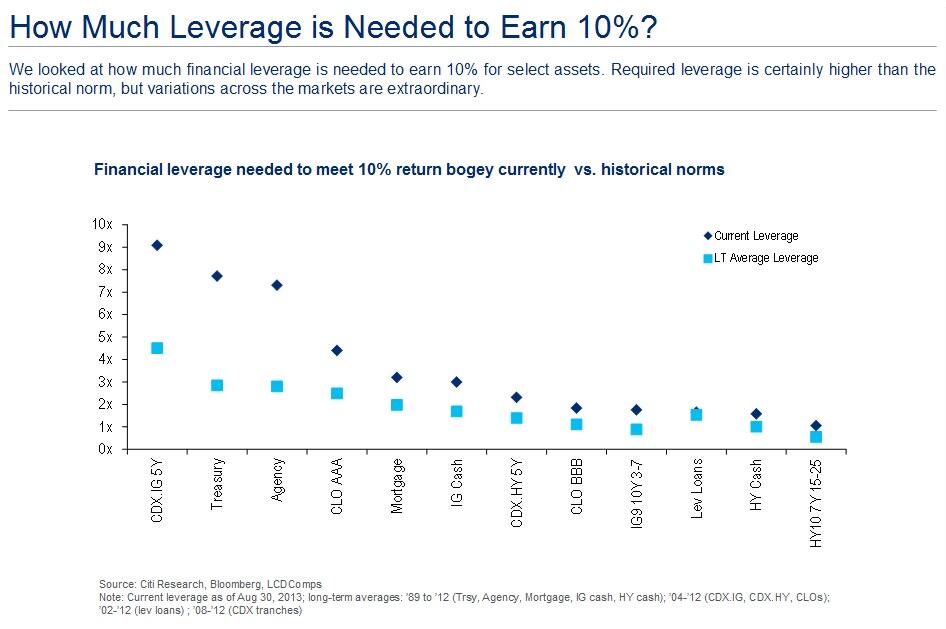From FT Alphaville:
You may detect a sceptical tone there, but the question is real: does it matter if something unexpected occurs in the world of credit and rates?Last October Alphaville's Tracy Alloway had a nifty little chart that we linked to in "Black Box Investing Versus Common Sense Quant":
We’ve been on this point for a while — assessment of risk is sticky, until it’s not — but were struck by a recent conversation with a market maker about his clients:
Everyone is acting like an LTCM.What does that mean? There are different views about what exactly caused Long Term Capital Management to blow up in 1998, almost taking a large part of the financial system with it, but broadly it was very large amounts of money chasing small amounts of profits available from mispricing between securities or markets that would disappear as prices converged.
The Nobel laureates of LTCM would take those small profits and turn them into big ones with a very large amount of leverage. One of the things they failed to realise was that lots of people, seeing the profits, would copy them. There was also the style drift, excessive capital and hubris chronicled in Lownstein’s When Genius failed, all of which came to a head after Russia defaulted....MORE
... Degree of Leverage Required To Earn Average Returns in Various Interest Rate Trades
A very nice catch by the FT's Tracy Alloway:

This is almost exactly what I was thinking of when I intro'd yesterday's "Is Alpha Dead? Beating the Market Has Become Nearly Impossible":Possibly also of interest:
Fortunately, in real markets anyway, you can take either side of a bet.The returns are still there. You may have to leverage it up and it isn't easy money as you really better be right, but the returns are still available. And you don't have to gear it at 100:1 as LTCM did....
That's why, when I see stories on the end of the commodity supercycle or some such, I get as interested on the short side as I would chasing the latest anti-obesity-drug-touting-biotech on the long.
It helps....
Broker-Dealer Leverage and the Cross-Section of Expected Returns
(58 page PDF)